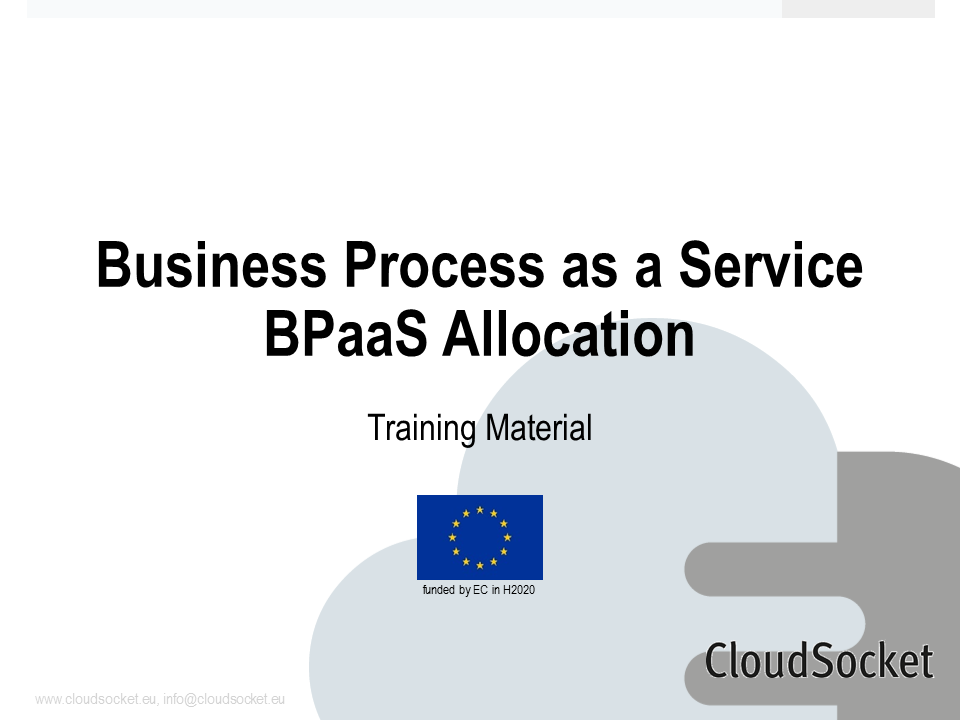2-BPaaS Allocation

2-BPaaS Allocation
BPaaS Allocation
The BPaaS Allocation includes the discovery and binding of concrete cloud services and cloud software packages that need additional deployment and creates a so-called cloud application markup language (CAMEL) file. Beside many other settings, this file includes the service endpoint URL. Additional information for the deployment, the payment model as well as for the marketplace like tagging information are also part of the file collection. The result is a so-called BPaaS bundle, a collection of files that enable the configuration of the marketplace and in case of a sales the deployment and operation of the business process.
The BPaaS Allocation Environment is a cloud service that has been created from the application server LiveBase. Hence, it runs in the cloud and uses the collection of BPaaS bundles as its database. User interfaces allow to search for registered services, selected concrete endpoints, configure deployment parameter as well as enter marketplace information. The result is a BPaaS bundle in CAMEL format, which can have several hundred lines of configuration code.
This allocation environment is injected by the following two innovations:
Smart Service Discovery and Selection:
A manual selection of appropriate services is impossible in a complex cloud environment. Hence, a semantic matching based on the existing match maker Alive is extended to not only discover functional requirements, but also non-functional parameters, which are described in the abstract workflows. A set of different match-making algorithms had been tested like ontology alignment, CP model transformation, CP solving to conclude in using a parallel approach to match cross-layer functional and non-functional requirements.
DMN-to-CAMEL Mapper
The cloud application management file (CAMEL) is typically expressive, complex, large, and requires several sub-models addressing IaaS and PaaS, hence detailed technical knowledge is needed for its interpretation. To enhance re-usability a decision layer has been introduced that maps DMN decision table from business requests to CAMEL file fragments. A change in business requirements therefore triggers a check of the DMN decision table, and in case the file needs adaptation, in finding existing fragments fitting that requirement. Details can be found in .
Information
BPaaS Allocation - Trainer GuideBPaaS Allocation - Slide Set
Smart Service Discovery - Trainer Guide
Smart Service Discovery Selection Slides
Video Smart Servcie Discovery
Deliverable D3.3 BPaaS Allocation and Execution Blueprint
Deliveralbe D3.4 BPaaS Allocation and Execution Prototypes
Deliverable D4.5 Architecture
Deliverable D4.8 Final BPaaS Allocation Environment
Innovation Item 2.1 PaaS/SaaS support of CAMEL
Innovation Item 2.2 SLA support in QWL-Q
Innovation Itme 2.3 DMN to CAMEL Mapping
Innovation Itme 2.4 Smart Service Discovery and Composition Tool
Innovation Item 2.5 SRL Extension to CAMEL
Video - Webinar on the BPaaS Allocation
Additional Information
Contact Person/Point: FHOSTERRelated CloudSocket Environment: Allocation
